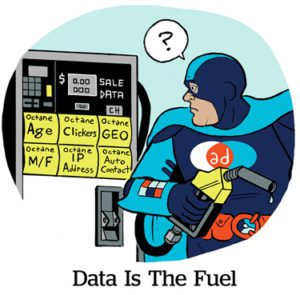With upfronts around the corner, programmers are going big on Nielsen alternatives.
On Monday, Warner Bros. Discovery (WBD) announced plans to transact media against VideoAmp and Comscore currencies during its upfront this year.
“We’re not just saying that we’re getting into alternative currency [anymore] – now, we’re actually going to be open for business,” Andrea Zapata, EVP of ad sales, research and measurement insights at WBD, told AdExchanger.
Still, with currency standards in flux, WBD is taking its transition to alt currencies step by step. VideoAmp and Comscore currencies will be available for WBD’s linear inventory this year, but not for streaming (yet).
“Streaming is the future of our business,” Zapata said.
But WBD’s streaming platforms (Discovery+ and HBO Max) are still just under three years old. Linear is still where most of its media supply is.
I need an advance
Although WBD is starting its alt currency journey in linear, TV advertisers are getting more accustomed to using granular targeting data.
Transacting on advanced audience segments is a “big, big deal for us,” Zapata said.
Specifically, WBD sells a lot of inventory as data-driven linear (DDL), or broadly scaling a media buy against a more specific type of audience. For example, rather than a basic age/gender demo, WBD can serve ads to viewers who, say, plan to travel in the next three months.
DDL is a good compromise for buyers. It provides scale against a target audience, but the targeting is looser than with addressable, which could potentially limit scale by getting too precise. Zapata said WBD considers DDL a “mid-funnel approach” because it sits in between broad, demo-based reach and one-on-one addressable.
Comscore has a “rich history” of advanced audience measurement using census-level data, Zapata said, adding that WBD has been transacting on advanced audiences with Comscore for years.
Demo-based buying with Comscore is what’s new this year, because plenty of traditional TV buyers are still asking for it, Zapata added.
A dalliance with data
VideoAmp, which signed a measurement deal with WBD in January, stands out because of the types of big data sets it’s using.
It commingles both automatic content recognition (ACR) and set-top box data for a “better grasp” on how and where people are actually seeing ads, Zapata said.
Compared with the direct-to-consumer model of streaming, which generates a lot of first-party data, WBD’s focus on linear means it relies pretty heavily on viewership reporting via ACR and set-top box data.
VideoAmp is also appealing because of its focus on clean room partnerships.
“Clean rooms are absolutely essential for our business,” Zapata said.
Dealing with large amounts of first-party data calls for privacy-safe guardrails, especially for data like ACR, which has privacy risks.
“Clean rooms are table stakes for a more targeted approach to selling our inventory,” Zapata said. “And there’s a lot of desire in the marketplace to start transacting with better targeting.”
Where’s iSpot?
Which is why broadcasters are partnering with alternative measurement providers like VideoAmp and Comscore.
But another alt currency that’s making headlines is missing from WBD’s partner list: iSpot.
WBD is still using iSpot as a measurement partner, but “we didn’t feel it was quite ready for transaction yet,” Zapata said.
Still, iSpot will participate in WBD’s next phase of currency testing at the end of Q2. And, as far as currency viability is concerned, Zapata said, “we believe iSpot will get there in short order.”
“It just simply wasn’t ready in time for this announcement,” she said, “nor do we believe it’ll be ready for this year’s upfront.”
Zapata didn’t share much detail about where exactly iSpot fell short, but she did assert WBD’s currency must-haves.
“Transaction readiness is nonnegotiable for us,” Zapata said. WBD is only looking to transact on currencies that integrate seamlessly into not just WBD’s backend measurement workflows, but also those of its clients.
But what does “transaction readiness” actually mean?
Antsy for transaction
The answer to that question lies in the difference between measurement and currency.
At its most basic level, TV ad measurement is “just a read on reach and frequency reporting,” Zapata said. Currency is more involved because it’s what informs dealmaking and billing.
According to WBD, viable video currencies need direct integrations with data clean room partners, such as Snowflake, for example. Currencies should also be able to forecast and report measurement with advanced audience segments, not just basic demos.
Currencies need to have this “very basic plumbing” in place, Zapata said. “It’s the least sexy part of the measurement conversation, but it’s the most necessary part for enabling a buyer and seller to actually transact.”




















